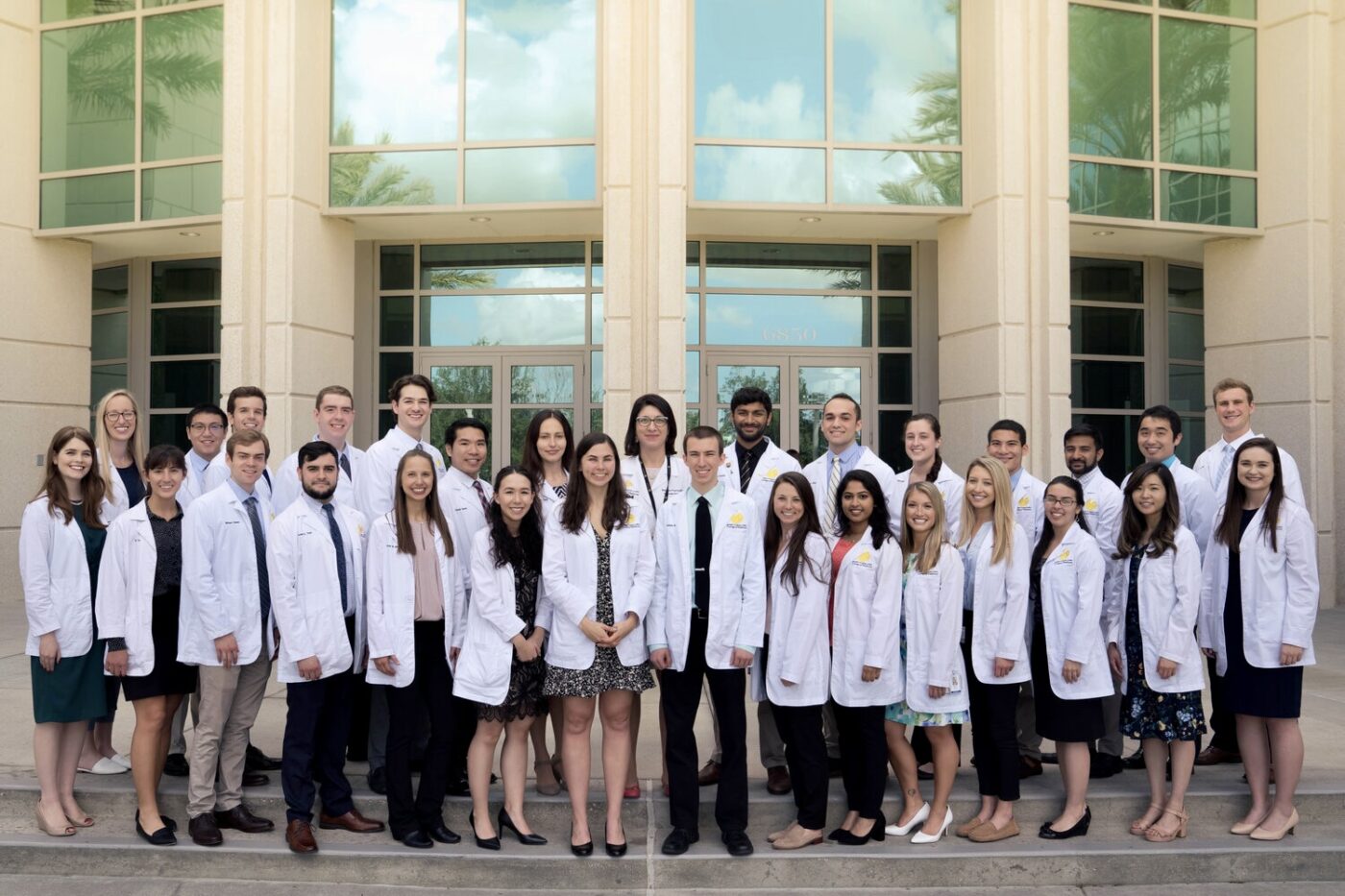In today’s rapidly evolving healthcare landscape, gaining clinical experience through physician shadowing remains more critical than ever. As the demands on medical professionals continue to grow—with advancements in technology, evolving treatment protocols, and heightened expectations for patient care—knowing how to shadow a doctor provides you with a unique, firsthand look into the realities of the profession.
Why Shadowing Matters Now More Than Ever
Recent updates from leading academic institutions and healthcare agencies underscore the importance of shadowing as an essential part of premedical education. Not only does it allow you to observe complex case management and patient interactions, but it also helps you build a competitive application for medical school by demonstrating your commitment to the field. In 2025, with continuing challenges in healthcare and new approaches to patient care emerging post-pandemic, early exposure to clinical environments is vital for understanding how to navigate the multifaceted responsibilities of a physician.
A 2025 Perspective on Clinical Experience
With increased emphasis on personalized education, modern pre-med advising now recommends that students begin shadowing during their sophomore year—ideally over an extended period such as a summer internship. This updated timeline reflects recent trends where hands-on experience is valued as much as academic achievements. Moreover, the rise of remote learning and telemedicine has opened additional avenues for students to observe clinical practices. However, in-person shadowing remains the gold standard for gaining a true understanding of patient care.
Importance of Shadowing a Physician
Physician shadowing is extremely important for your application to medical school. Your shadowing hours demonstrate your commitment to a medical career. You also have an excellent opportunity to learn about what it is like to work in the challenging healthcare field. Shadowing enables you to observe the specific responsibilities of a physician. Imagine watching a physician handle complicated cases, determine the most effective treatment plan, and record patient notes.
Shadowing a doctor is so important that it is considered integral to your premedical education. Even though shadowing a physician is not mandatory for admittance to medical school, your experience can improve your chance of acceptance. Shadowing a doctor is an effective tool for demonstrating your ideal fit for a medical career. You demonstrate your willingness to dedicate time and energy to becoming an exceptional physician.
Shadowing a doctor provides you with an in-depth knowledge of the medical field. You are showing you are committed to becoming a physician, willing to commit the hours required, able to handle the responsibilities and have the perseverance to succeed. Shadowing a physician will ensure you are not making a mistake because you understand everything expected of a premed student. You need to avoid the mistakes numerous students have made while physician shadowing. You also need to know how to obtain shadowing hours.
How to Shadow a Doctor
You have several different options for obtaining shadowing hours. If you have a good relationship with a physician, ask if you can shadow them. If you cannot obtain physician shadowing hours, ask your academic advisor, professors, or teachers which physicians students have previously shadowed. If you are attending college, contact the hospital or medical school on campus. Contact the volunteer office for hospitals to determine if shadowing is available.
Conduct an online search for local physicians with specialties of interest. Contact the physician through email, or call the office to request shadowing hours. Make certain you provide as much advance notice as possible. Explain the reasons you are interested in shadowing a specific physician, such as you are interested in their specialty or the physician was recommended. Briefly explain your goals, medical experience, and where you plan to attend school.
Always be professional and polite. Numerous physicians are interested in speaking with students. If you are not offered shadowing hours, contact other physicians. If one of your parents is a physician, you are a step ahead. If not, you must establish the necessary connections. An excellent option is creating a list of specialties of interest. You should have a basic idea of which areas of medicine interest you the most to determine how to shadow a doctor.
If you are uncertain which specialties are the most intriguing, begin with the basics—contact physicians specializing in family or internal medicine. Physician shadowing provides an opportunity to learn more about numerous medical specialties. Shadowing several physicians with different specialties often impresses medical schools. You are demonstrating you have learned about multiple areas of the medical profession. You may even discover which specialties interest you the most.
One of your best options for shadowing a doctor is contacting your family physician. Most individuals have been seeing the same physician for many years. You most likely already have a relationship with your physician. This is a good opportunity to ask for shadowing hours from someone you know. Your physician will probably be thrilled you are entering the medical field. Your doctor will also know other physicians. You may be able to make important connections with other physicians this way.
Most physicians are willing to help premed students by sharing their specialty, experience and ideas. At heart, a physician is already a teacher. If your physician does not have enough time for shadowing, ask for a recommendation. You will never receive physician shadowing hours if you do not ask. Referrals are excellent, but you still need to do the work. Make an effort by visiting the physician’s office, sending an email, or calling.
Represent yourself as a professional, and explain why you are interested in a particular field. Politeness and sincerity are critical to your success. Write a formal letter requesting shadowing hours, and attach a copy of your resume to enable the physician to see everything you have accomplished. If you do not receive a response from an email or a letter, visit the office in person. Once you start shadowing a doctor, enjoy your experience.
You can learn a lot about preparing for medical school through shadowing and Pre-Medical Internships. You are on the path to becoming an important member of the medical field. Shadowing a doctor is your chance to learn by watching how physicians handle their practices and patients.
The Most Important Steps for Successfully Shadowing a Doctor
You can maximize your shadowing experience. The tips below are important when you start shadowing a physician.
Planning Early
Planning early will help you obtain physician shadowing hours to maximize your experience. Decide which specialty you intend to pursue in medical school. Shadowing a doctor is your opportunity to gain experience. Determine where you want to obtain your shadowing hours, such as a hospital, medical center, or clinic. Consider volunteering at a health fair or hospital to gain experience working with physicians and patients.
Finding the Best Opportunities
One of the most intimidating tasks you will encounter is how to shadow a doctor. Do not be afraid to ask for help from your professors, family, friends, and family physician. Ask for referrals, volunteer at medical institutions, and ask for recommendations. You need to find the balance between aggressive, professional and courteous. If you cannot obtain physician shadowing hours in your chosen specialty, accept the hours you are offered. Always remember shadowing a doctor is about obtaining experience, and knowledge in the medical field.
Asking Appropriate Questions is Imperative
Physicians are often extremely busy during rounds due to the high volume of patients. The same is often true for physicians seeing patients in an office. Do not interrupt a busy physician with questions. You will frustrate the physician and medical team while compromising patient care. The best time to ask questions may not be when you are shadowing a doctor.
Physician shadowing is about gaining knowledge regarding the field of medicine. The question of how to shadow a doctor involves both your respect and enthusiasm. Wait until the physician is not busy or with a patient before you ask questions. Make sure your questions are short, relevant, and to the point.
How to Shadow a Doctor by Selecting the Right Field
As a pre-med student, you can shadow a doctor in any field. Despite this, numerous medical universities are interested in students with physician shadowing in surgery or primary care. Both of these fields demonstrate your ability to make an educated decision regarding your career.
The Power of Reading
You can help determine the medical field of the most interest by reading. Take the time to learn about the different specialties while gaining knowledge. If you are interested in pediatrics, read all the books about this field. Once you start physician shadowing, you can ask more insightful questions. Not only will you be demonstrating your enthusiasm and knowledge, but you will be displaying your commitment as well.
Professionalism is Critical
During your physician shadowing, act professionally, and wear professional attire. Avoid any outfits that appear too revealing or casual. Pay attention when shadowing a doctor, and ask questions appropriately. Carry a notebook to write down any questions and take notes. Your journal is an essential reference for all of the knowledge you have gained. Write down everything you feel is necessary, the actions of the physician, how patients are treated, and anything that feels relevant.
Discovering New Medical Specialties
While shadowing a doctor, ask about other specialties the physician is familiar with at the appropriate times. When the physician has a moment free, ask why they chose their specialty, if any other fields were considered, and why the doctor made specific choices. The physician may begin talking about other specialties they considered. Some physicians knew which specialty they wanted from the beginning. Others may have considered numerous specialties during their time in school.
When you ask these types of questions, you are essentially networking. Physicians have colleagues in numerous medical fields. You may obtain shadowing hours in a different specialty of interest while shadowing a doctor. Your relationship with the physicians you are shadowing is essential. Even if you do not receive more physician shadowing hours, you will learn about other areas of medicine. You may learn about a new specialty you are not familiar with.
Spending the Time Necessary for Placement in Medical School
You have a wide range of choices for medical school. The majority recommend shadowing a doctor for 25 to 40 hours every week. The idea is to ensure you understand precisely what is required for a career as a physician. Shadowing a doctor provides insight into the specific demands required of physicians. There is no minimum number of hours required for physician shadowing.
Despite this, the more hours you have, the more you can fortify your statement. The more hours you spend shadowing a doctor, the greater your comprehension of the unique attributes and skills of successful physicians. The key to having a career as a physician is developing and using your skills.
Recommendations are Key
Once you have completed your physician shadowing, ask the physician for a reference letter. Your recommendation letters serve as proof you can become a physician. Your letters are also important for your personal statement and when your interviews with medical schools begin.
How to Shadow a Doctor Without Making Mistakes
Physician shadowing is an essential aspect of your medical career. There are mistakes you need to avoid while physician shadowing, as outlined below.
Becoming Discouraged When a Patient Asks You to Leave the Room
There will be some patients that do not want you in the room. Do not let this impact your desire to learn, or the excitement of your first day of shadowing a doctor. You will most likely experience this situation during your physician shadowing. In most instances, the PA or nurse will speak to the patient before the physician arrives. The patient will be asked for permission to have a student present.
If the patient does not want you there, remain professional. Respecting the decisions of patients is an important part of being a good doctor. The majority of patients will want to be involved with your experience. If the patient will not accept your presence in the room, exit respectfully, and continue with your day.
Disrespecting Healthcare Staff or Providers is Not Acceptable
Your presentation combined with the way you treat medical professionals is very important for physician shadowing. Whether or not the doctor is present, never disrespect anyone including the receptionist or members of the medical team. Your actions must include respecting every professional in the workplace. Your interactions with the team are just as critical as the way you interact with the physician. Respect others the way you want to be respected.

Do Not Shadow a Doctor Just to Receive a Letter of Recommendation
When your physician shadowing results in a letter of recommendation, it is wonderful. This type of letter is important for your applications to medical school. Do not make the mistake of shadowing a doctor just to receive a letter of recommendation. If the doctor had enough time to learn about you, and your experience was interesting and successful, requesting a letter of recommendation from the physician is appropriate.
The physician may even offer to provide a letter of recommendation for you. If the doctor does not offer, consider your experience before you ask for a letter. Letters of recommendation are about how you functioned during your physician shadowing, as well as your professionalism and character. If the physician does not know you well enough to write a compelling letter, your request might be denied. If you push the physician, the letter you may receive will most likely not be suitable for your application.
Think about any relationship you developed with the physician before asking for a letter. Physicians also have extremely busy schedules. Asking for a letter of recommendation at the last minute is a recipe for disaster. Give the doctor as much time as possible to write a good recommendation letter to improve your chance of being accepted into medical school. Planning ahead is another good way to demonstrate your professionalism.
Breaking Any Rules, Including the HIPPA Oath
If you have not started your first physician shadowing experience, you may not yet be familiar with HIPPA. HIPPA is an abbreviation for the Health Insurance Portability and Accountability Act. This act was created for the protection of patient health information in addition to providing patients with rights to certain portions of their health records. Understanding all of the regulations is critical for every physician. You may be required to take HIPPA training prior to shadowing a doctor.
Before beginning physician shadowing, take the time to research HIPPA online. You can find excellent information by visiting the U.S. Department of Health and Human Services.
Maximizing Your Physician Shadowing Experience
Before shadowing a doctor, research online, read books or listen to medical podcasts. You do not need medical experience to begin shadowing a doctor, but it is helpful. You can demonstrate interest by knowing medical procedures or diseases ahead of time. You should shadow the same physician for a long period. The recommendation is a minimum of a couple of weeks. If possible, shadow a doctor for an entire summer.
The more time you spend with the physician, the better your opportunity to understand the medical profession. Write down everything you see and learn in a journal daily. Your journal is an excellent source of information you will appreciate in the future. Ask the physician questions about the pros and cons of the medical field, the lifestyle of a doctor, and what it feels like to have a career as a physician.
Be straightforward, hard-working, and professional at all times. If the physician asks you to perform a task, take advantage of the opportunity to learn. Once your physician shadowing experience has concluded, you will have gained significant insight and expertise to help you in medical school.
Your Next Steps and How International Medical Aid Can Help
Physician shadowing is a critical stepping stone on your path to becoming a successful doctor. By engaging in shadowing, you not only build a deeper understanding of what is expected in a medical career, but you also demonstrate your genuine commitment and preparedness to tackle the challenges of medical school.
Integrating Your Experiences with Future Success
Remember, the knowledge and insights gained from shadowing a physician will serve as the foundation for your future success. As you compile your shadowing hours, document your experiences in a journal, and ask thoughtful questions, you’re actively preparing yourself for the rigorous demands of medical school. This real-world exposure is invaluable—it will help you hone your clinical skills, refine your communication, and ultimately build a competitive resume that stands out in the medical school admissions process.
How International Medical Aid Enhances Your Pre-Med Journey
To further elevate your pre-med experience, consider integrating International Medical Aid’s offerings into your journey:
- Healthcare and Pre-Med Internships: IMA provides structured internships that give you hands-on clinical exposure in diverse hospital settings. These experiences not only reinforce the knowledge you gain through shadowing but also boost your confidence and readiness for medical school.
- Medical School Admissions Consulting: IMA’s personalized admissions consulting service helps you craft a compelling narrative for your application. With expert guidance on personal statements, interview preparation, and strategic application planning, you can ensure your experiences, including your shadowing hours, are effectively showcased.
Your Path Forward
As you continue your journey, remember that physician shadowing is critical to building a holistic and competitive profile for medical school admissions. Stay proactive—plan your shadowing experiences early, seek guidance from mentors and advisors, and document every learning moment. By integrating these practices with the comprehensive support offered by International Medical Aid, you can be confident that you’re well-prepared for the challenges of the MCAT and medical school admissions.
For more detailed information on how to enhance your clinical experience and strengthen your application, visit:
Your journey to a successful medical career begins with every step you take today—make them count.
Putting Everything Together
The time you spend shadowing a physician is critical for your medical school admittance and experience. Once you have learned everything you can about shadowing a physician, consider applying to our Pre- medical Internship Programs. Your medical career is your future. We encourage you to apply for your internship as soon as possible.





